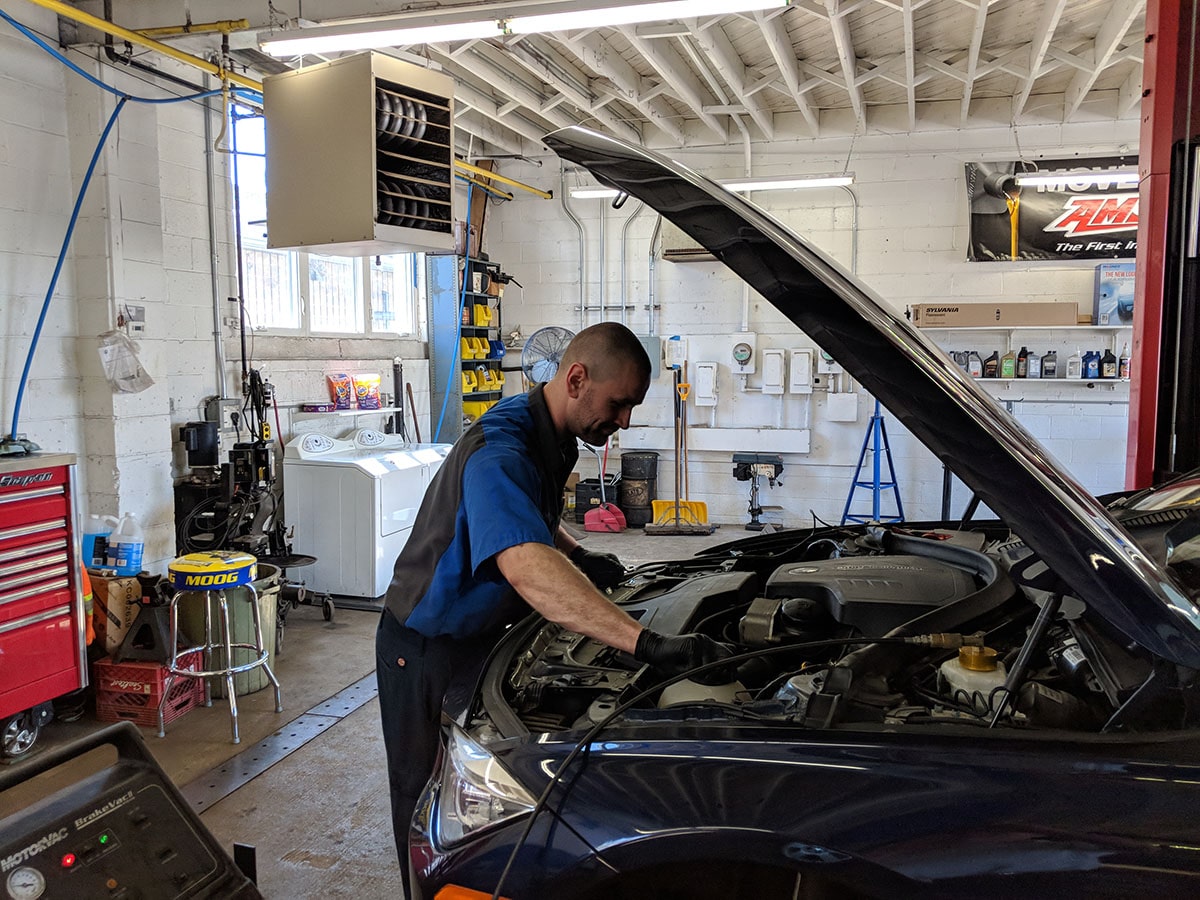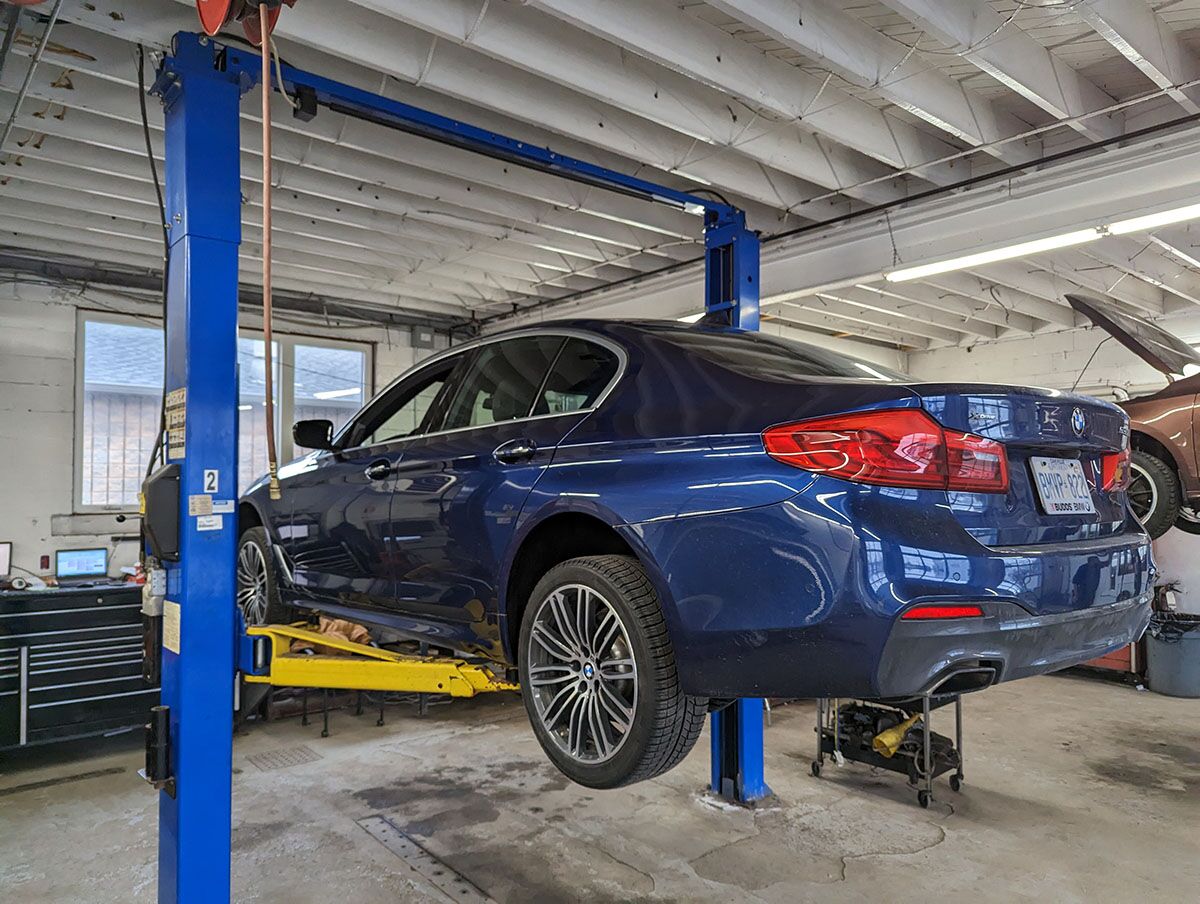Regular vehicle inspections help identify potential issues before they become major problems, ensuring that your vehicle remains reliable on the road — here in Burlington or wherever your travels take you.
A well-maintained vehicle is integral for your safety and the efficient operation of your car. In Ontario, vehicle inspections are a prerequisite for obtaining a Safety Standards Certificate (SSC). If you are a private vehicle owner, an SSC is required in one of four scenarios:
- Transfer of ownership of a used vehicle
- Registering a vehicle from out-of-province
- Registering a rebuilt vehicle
- Changing the status of a vehicle from "unfit" to "fit"
The Auto Station's Digital Vehicle Inspections (DVI) allow customers to see exactly what our mechanics and technicians see — with video presentations, photos, and reports delivered directly to you via text or email. No surprises, just exceptional service!
Components of a Professional Vehicle Inspection
Our comprehensive vehicle inspection services help detect potential problems early, allowing for timely repairs. Points of emphasis include:
Powertrain
- Engine and Transmission: Check for any leaks, unusual noises, and proper operation.
- Drive Shafts and Axles: Ensure they are not damaged or excessively worn.
- Mounts: Verify that engine and transmission mounts are secure and not deteriorated.
Suspension
- Shock Absorbers and Struts: Inspect for leaks, damage, and proper function.
- Springs: Check for cracks, breaks, or sagging.
- Bushings and Joints: Ensure they are not excessively worn or damaged.
Brake Systems
- Brake Pads and Shoes: Check for adequate thickness and wear.
- Rotors and Drums: Inspect for excessive wear, cracks, or warping.
- Hydraulic System: Ensure there are no leaks and that the brake fluid is at the proper level.
- Parking Brake: Verify that it holds the vehicle securely.
Steering
- Steering Wheel and Column: Check for excessive play and proper operation.
- Linkages and Joints: Ensure they are not excessively worn or damaged.
- Power Steering System: Inspect for leaks and proper fluid levels.
Instruments and Auxiliary Equipment
- Gauges and Indicators: Ensure all are functioning correctly, including speedometer, fuel gauge, and warning lights.
- Windshield Wipers and Washers: Verify they are operational and in good condition.
- Horn: Ensure it is working properly.
Lamps
- Headlights: Check for proper operation and alignment.
- Taillights, Brake Lights, and Turn Signals: Ensure all are functioning correctly.
- License Plate Light: Verify it is operational.
Electrical System
- Battery: Check for secure mounting and no corrosion on terminals.
- Wiring: Inspect for any frayed or exposed wires.
- Fuses and Relays: Ensure they are in good condition and properly rated.
Body
- Frame and Chassis: Check for rust, cracks, or other structural damage.
- Doors, Hood, and Trunk: Ensure they open and close properly and are securely latched.
- Mirrors and Glass: Verify they are not cracked or broken and provide clear visibility.
Tires and Wheels
- Tire Tread Depth: Ensure it meets the minimum legal requirement.
- Tire Condition: Check for cuts, bulges, or other damage.
- Wheel Alignment and Balance: Verify proper alignment and balance to prevent uneven wear.
Routine Maintenance Best Practices
Automobiles are complex machines with many potential fail points. However, with a little upfront effort and vigilance, you can help prevent major issues and extend your vehicle's lifespan.
- Regularly Check Fluid Levels
Ensure that your engine oil, brake fluid, coolant, and windshield washer fluid are at the appropriate levels.
- Monitor Tire Pressure
Check your tire pressure monthly and before long trips to ensure optimal performance and fuel efficiency.
- Inspect Lights
Regularly check that all your vehicle’s lights are functioning correctly, including headlights, brake lights, and turn signals.


- Listen for Unusual Noises
Be wary of any unusual sounds when driving, as these can be early indicators of potential issues.
- Trust Your Gut
Spongy or unresponsive brakes? Does your vehicle favor one side or another? If you notice something "off" about your driving experience, it's a good sign to schedule an inspection. - Don't Ignore Warning Lights and Indicators
Don't neglect that "Check Engine" or "Oil Pressure" warning on your vehicle's dashboard — they're there to help us uncover issues that my not be immediately apparent. - Regularly Wash and Wax
Prevent damaging rust and protect your paint by remembering to give your car a bath!
Routine Maintenance Schedule and Cost
Oil Changes
⇒ Every 5,000 to 7,500 km
⇒ $50 - $100
Brake Inspections
⇒ Every 6 months or 10,000 km
⇒ Included with scheduled maintenance at The Auto Station
Tire Rotations
⇒ Every 10,000 km
⇒ Included with scheduled maintenance at The Auto Station
Fluid Flushes
⇒ Every 2 years or 40,000 km
⇒ $100 - $150
Replace Cabin Air Filter
⇒ Every 24,000 to 48,000 km
⇒ $40 - $95
Replace Engine Air Filter
⇒ Every 1-2 years, or 20,000 km
⇒ $30-$115
Replace Spark Plugs
⇒ Every 5 Years, or 50,000-130,000 km
⇒ $135-$675 (depending on engine complexity)
Comprehensive Inspections
⇒ Annually
⇒ $100 - $200
Why Choose The Auto Station for Vehicle Inspections?
With extensive knowledge of all vehicle systems — including engines, transmissions, brakes, and HVAC systems — our highly trained team stays updated with the latest advancements in automotive technology to provide the best quality care possible.
We use state-of-the-art diagnostic tools and equipment to perform thorough inspections and accurate diagnostics, reducing downtime and ensuring high-quality repairs and maintenance that exceed industry standards.
Our Digital Vehicle Inspections allow us to share our findings with you directly through recap videos, photos, and reports — conveniently delivered via text or email. Customer education is important to us!
Choose The Auto Station for your vehicle inspection and experience exceptional service from a team of dedicated professionals.

